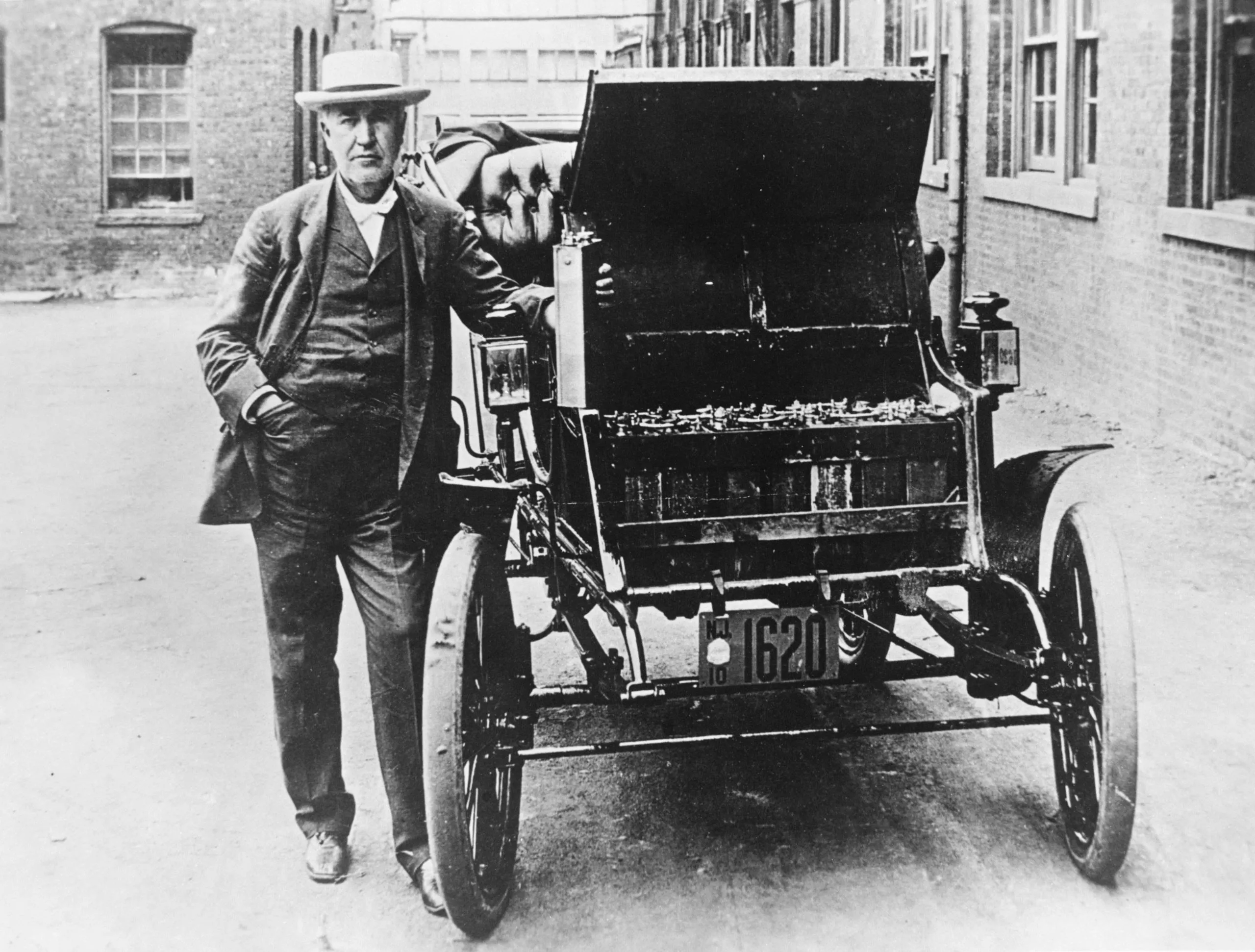Electric cars, or EVs, are frequently regarded as a cutting-edge invention and a representation of the future. But few people are aware that this technology has more than 150 years of history. Ingenuity, vision, and a will to alter our perception of mobility are the driving forces behind the creation of the first electric automobile in history. In addition to providing important lessons for the future, this adventure set the groundwork for the current EV revolution.
Table of Contents
- The Birth of Electric Car Mobility
- The Game-Changing Advancements: Enter the Late 1800s
- A Brief Era of Glory: The Early 1900s
- The Decline and Dormancy
- Rediscovering the Past: The Modern EV Renaissance
- Want TO Know More About EV
- The Legacy and Lessons
- Closing Thoughts
The Birth of Electric Car Mobility
Early in the 19th century, when horse-drawn carriages dominated transportation and the steam engine was only starting to gain popularity, the first electric automobile appeared on the scene. Thanks to developments in battery technology, innovators started experimenting with electric propulsion in the 1820s and 1830s. Even though the initial prototypes were crude and unusable, they constituted a daring advancement.
Robert Anderson, a Scottish inventor, was one of the first to create a rudimentary electric vehicle that ran on non-rechargeable batteries between 1832 and 1839. Even though it was far from ideal, Anderson’s invention showed that electricity might be a practical source of power for automobiles.
The Game-Changing Advancements: Enter the Late 1800s
Significant advancements in battery technology throughout the 19th century transformed the potential of electric vehicles. The rechargeable lead-acid battery was created in 1859 by Gaston Planté and refined in 1881 by Camille Alphonse Faure. This invention opened the door for the development and testing of more useful electric cars.
By the late nineteenth century, electric cars were starting to become popular. The Flocken Elektrowagen, created in 1888 by German engineer Andreas Flocken, is widely regarded as the first actual electric vehicle in history. With its electric motor and rechargeable battery, this carriage-like design was more dependable and environmentally friendly than previous iterations.
A Brief Era of Glory: The Early 1900s
The heyday of electric vehicles was the early 1900s. By this point, EVs were seen as a quiet and opulent substitute for internal combustion engines, which were noisy and dirty. Electric cars thrived in urban areas where short journeys and slow speeds were typical. Automobiles made for the wealthy elite were developed by manufacturers including Baker Electric, Detroit Electric, and Columbia Electric Car Company.
During this time, electric automobiles offered many benefits over their gasoline-powered equivalents. They were simple to use, clean, and didn’t need the cranking mechanism that was necessary for gasoline-powered vehicles. Electric cars piqued the curiosity of notable individuals like Henry Ford and Thomas Edison, who even worked to improve EV batteries.
The Decline and Dormancy
Despite their early success, gasoline-powered vehicles ultimately prevailed over electric automobiles. Charles Kettering’s 1912 development of the electric starter greatly increased the convenience of gasoline-powered vehicles, while Henry Ford’s innovations in mass production greatly reduced their cost. While EVs battled with their limited range and slower speeds, gasoline became affordable and readily accessible.
Electric automobiles were limited to specialized uses like milk floats and delivery vans by the 1920s, when they had virtually vanished from the road. EVs were a neglected aspect of automobile history for a large portion of the 20th century.
Rediscovering the Past: The Modern EV Renaissance
Due to technological advancements and environmental concerns, interest in electric cars has increased in the twenty-first century. The automobile industry has transformed because of companies like Tesla, Nissan, and BYD, which have made EVs quicker, sleeker, and more affordable for regular people.
The pioneers of the past are largely responsible for the electric vehicles of today. The foundation for the technology we today take for granted was created by the early engineers and innovators. Electric motors, regenerative braking systems, and rechargeable batteries—all crucial elements of contemporary EVs—have their roots in 19th-century pioneers.

Want TO Know More About EV
Charging Your Drive with Electrifying Insights?
The Legacy and Lessons
The development of the first electric automobile in history is not just an intriguing historical account; it is also evidence of the strength of ingenuity and tenacity. It serves as a reminder that creative concepts frequently encounter obstacles and failures, but the seeds they sow can grow into successful endeavors in the future.
It is important to keep in mind the lessons learned from the early days of electric automobiles as we transition to a more sustainable future. When visionaries, engineers, and innovators work together, amazing achievements may be made. Moreover, contemporary EVs have the potential to completely transform the future, much like the original EVs did more than a century ago.
Closing Thoughts
The legacy of the world’s first electric car is a story of ambition, creativity, and determination. From the crude experiments of Robert Anderson to the luxurious EVs of the early 1900s, the history of electric mobility is a journey of triumphs and trials. Today, as electric vehicles roll into the spotlight, we honor the visionaries who dared to dream of a cleaner, quieter, and more sustainable mode of transportation.
If you want to get any more information, then follow my Instagram account

